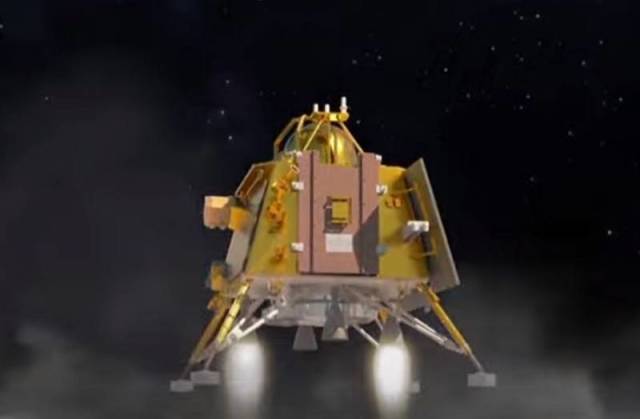
Image source: topwar.ru
India has literally burst into a small club of powers with technologies for space exploration. Moreover, they did not bother with trifles in New Delhi and immediately began to implement one of the most complex projects in the history of the entire world cosmonautics, launching the first lunar mission "Chandrayan-1" in 2008.
The second mission to send the Chandrayan-2 station to the moon failed when attempting a soft landing at the time of a critical turnaround maneuver.
The Indian automatic space station "Chandrayan-3" with an orbiter, a lander and a lunar rover was launched into space on July 14 and entered lunar orbit on August 5, after which the device began to fly over the Earth's satellite in order to reduce the distance before landing to one hundred kilometers. In fact, the launch vehicle will remain in orbit, acting as a signal relay satellite, and the Vikram descent module will be sent to the lunar surface.
The maneuver to separate it from the base platform was scheduled for August 17, later the Indian Space Research Organization reported that the descent could be postponed to August 27. However, nothing unexpected, as in the case of the Russian Luna-25 spacecraft, did not happen. The descent module began landing on the specified date.
Today, the Indian automatic station "Chandrayan-3" transmitted footage of the lunar surface taken by one of the cameras of the Vikram lander. At the moment, it is already known that the landing platform of the Chandrayan-3 lunar station has successfully made a soft landing, landing at its South Pole for the first time in the history of studying the Earth's satellite. The broadcast of the Indian Space Agency was watched by Prime Minister Narendra Modi and another 7.8 million people.

Image source: topwar.ru
It is expected that the payload of the Chandrayan-3 lunar rover mission will provide breakthrough knowledge about the elemental composition of the lunar surface. An alpha particle X-ray spectrometer and a laser-guided spectroscope are installed on the lunar rover. Detectors are also installed on the Vikram descent module.
